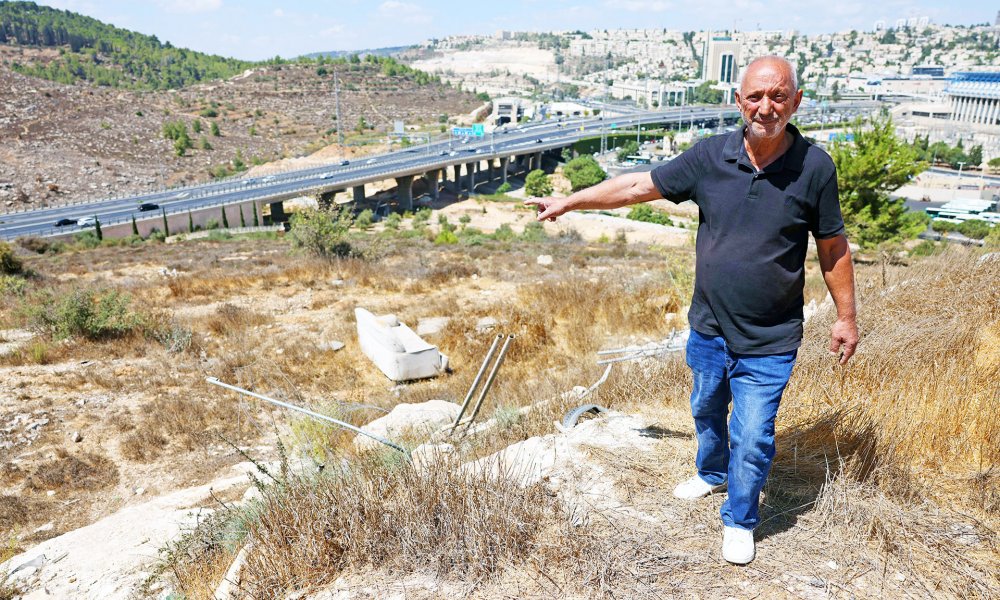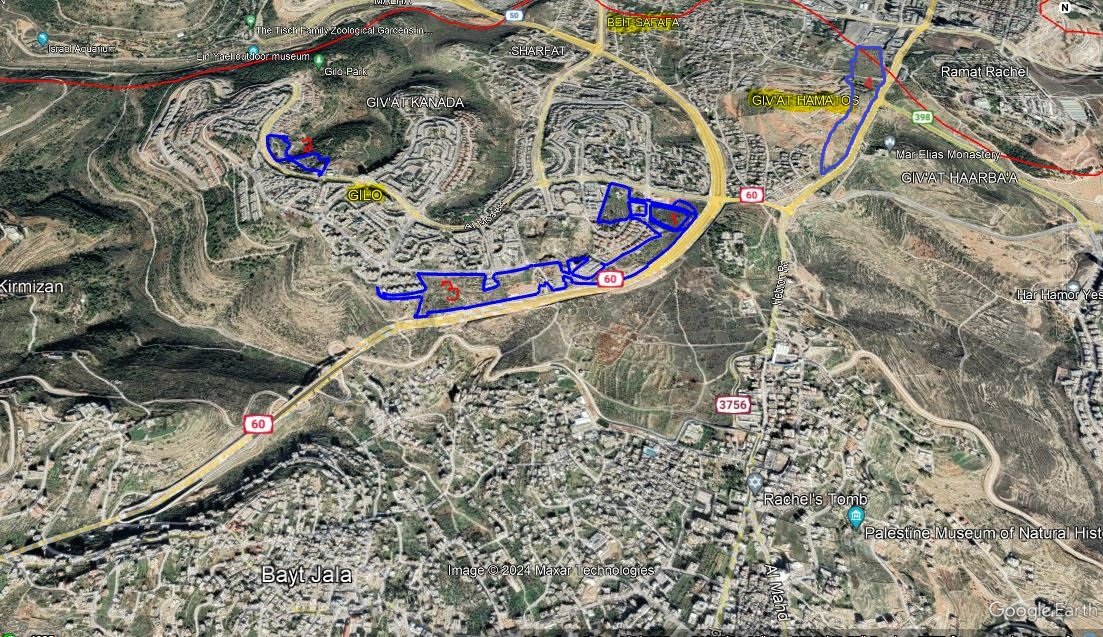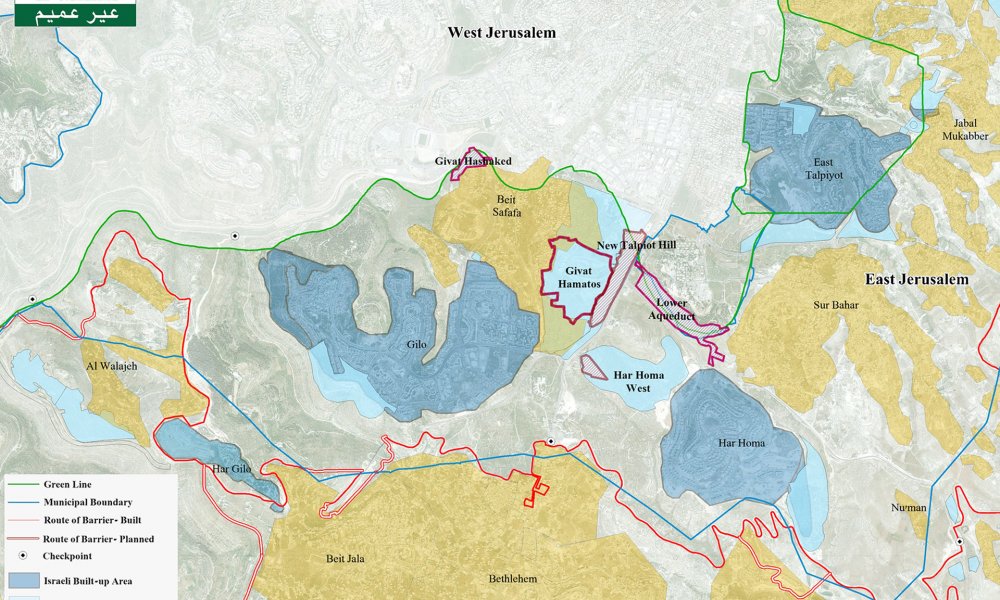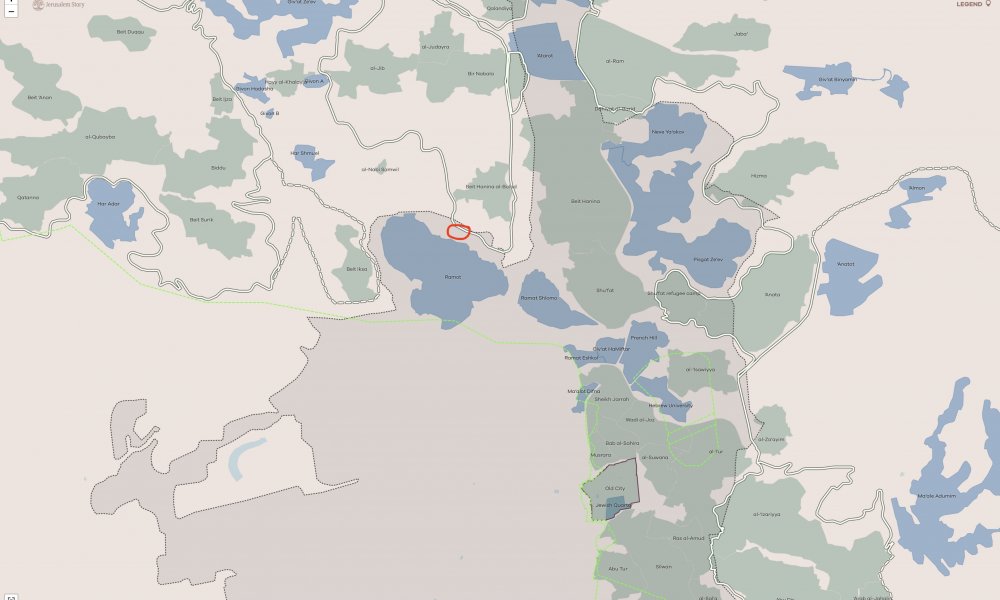With international attention paid to Israel’s looming multi-front regional war, the state is advancing plans to build 6,700 settlement housing units in East Jerusalem.1

Credit:
Ahmad Gharabli/AFP via Getty Images
Israel to Advance Nearly 7,000 Settlement Units in East Jerusalem
Snapshot
Israeli settlement construction plans hurtle forward in East Jerusalem; as of July 2024, nearly 7,000 settlement housing units have been approved. These plans suggest that Israel is rapidly moving to prevent the establishment of a Palestinian state.
Gilo: Three Plans
On June 20, 2024, a plan (TPS 1164433) to build 760 housing units in the Israeli settlement of Gilo in the southern end of the city was approved for public review, which means that the public has 60 days to object to the plan.2 This plan was initiated by the Israel Land Authority (ILA) along with private Israeli landowners. The units would be built on 22 dunums of land that runs along Route 60 and falls in the southeastern edge of Gilo. The land was seized from its Palestinian owners, residents of Beit Jala in the occupied West Bank, using the 1950 Absentees’ Property Law, allowing Israel to declare the property owners as “absentees” because the Israeli-imposed municipal boundaries separated the landowners from their land, excluding them from the city.3
A second settlement plan (TPS 1284223) to build 1,900 housing units on 176 dunums of land along Route 60, expanding Gilo, was also supposed to be discussed on July 15, 2024, but that hearing has been postponed to an unspecified date.4 This Gilo settlement plan, combined with the already-approved plan for 760 units, will expand Gilo southeastward, further depleting the available land in the Palestinian neighborhood of Beit Safafa.5
A third plan for Gilo (TPS 1233030), which newly emerged this year, calls for yet another expansion of Gilo by 528 housing units on 29 dunums of land.6 On July 15, 2024, the committee advanced this plan, which will expand Gilo northward.
Givat Hamatos and Hebron Road: Sealing Jerusalem’s Southern Edge from the West Bank
Givat Hamatos is the first new settlement to be built in Jerusalem in over 20 years. It commenced with Givat Hamatos A (TPS 14295), which has 2,610 housing units currently under construction.7
On August 4, 2024, the Jerusalem District Planning and Building Committee also approved for public review a plan (TPS 657593) referred to as Hebron Road Strip, to expand Givat Hamatos, which seeks to build 3,500 housing units and 1,300 hotel rooms on 140 dunums of land along Hebron Road.8 According to Ir Amim, “the construction of hotels in this area will likely serve as a source of competition with the tourism industry in Bethlehem, potentially diverting vital business from the Palestinian economy.”9
The new Hebron Road Strip plan, together with the housing units currently being built in Givat Hamatos, would expand the area of the settlement by almost 40 percent10 (see map).
The new plan was expedited at “rapid speed,” according to Ir Amim.
“These two plans along with concurrent settlement advancements in the area are cumulatively sealing-off East Jerusalem’s southern edge from Bethlehem and the southern West Bank, while creating more contiguity with the Gush Etzion settlements,” Israeli Jerusalem-focused nonprofit Ir Amim wrote in its August 2024 newsletter on Givat Hamatos.11
Unlike the other settlement plans, which were promoted by the ILA, the plan for expanding Givat Hamatos via Hebron Road Strip was submitted by an Israeli firm, New Talpiyot Hill, and a foreign company, Dyani Holdings. The Greek Orthodox Patriarchate of Jerusalem owns the land but has given long-term property rights to New Talpiyot Hill. The plan includes establishing seven Jewish sites but does not include building any places of worship for other religions, suggesting that the planned construction will only benefit Jewish residents, not the housing-strapped Palestinian population of the area.12
Ramot and Beit Hanina al-Balad
A hearing about a plan (TPS 1189232) to build 800 settlement housing units in the Israeli settlement of Ramot (or Ramot Allon) is scheduled for August 7, 2024.13 If the plan is approved, it will expand Ramot northward toward the Separation Wall, encroaching onto the East Jerusalem neighborhood of Beit Hanina al-Balad,14 which lies directly beyond it on the other side of the wall, which severed it from the rest of the Palestinian neighborhood of Beit Hanina and engulfed it on three sides (see map). But it will also connect to two other pending planned expansions, Ramot Allon North A (TPS 921353) with 1,318 units and B (TPS 921239) with 600 units, for a total of 1,918 more housing units being added to Ramot.15
Demographic Battle: Accelerating Housing for Jews while Displacing Palestinians
Although these various new settlements are in areas studded with Palestinian neighborhoods, and although there is an acute housing shortage for the Palestinians of the city, these settlements and their massive new housing potential are meant for Jews only. According to Ir Amim:
The intentional neglect to provide housing opportunities for Palestinians coupled with the selective use of home demolitions under the pretext of lacking building permits deprives Palestinians of the basic right to housing and serves as a tool for displacement.16
Preventing Palestinian Statehood
In July, the Higher Planning Council (HPC) within Israel’s Civil Administration, the military body governing the rest of the West Bank (outside East Jerusalem), approved 5,295 settlements in occupied Palestinian territory. Hillel Roth, the civilian deputy in the Civil Administration appointed by minister Bezalel Smotrich, served as the HPC’s legal advisor during the approval meeting, which marked a historic shift as the position is usually held by a military officer and not a civilian.17 The Civil Administration recently transferred management of civilian life from its authority to Roth—sparking concerns that Israel is formally annexing the West Bank by shifting power from a military to civilian domain.18
Moreover, the approval of nearly 6,000 settlements in the West Bank along with the thousands of settlements slated for East Jerusalem suggests to settlement experts that Israel is moving with greater urgency to prevent any possibility for the establishment of a Palestinian state.
“What you’re seeing playing out in East Jerusalem is very much indicative of what’s also being played out in the West Bank,” Amy Cohen, international relations director at Ir Amim, told Jerusalem Story.19 “They go hand in hand.”
Increased settlement expansion and development along Jerusalem’s southern perimeter is meant to sever East Jerusalem’s connection to the West Bank.
“The plan is to build Jewish neighborhoods so that this corridor will be blocked and there will be no potential continuity between the Palestinian neighborhoods of East Jerusalem and Bethlehem and the West Bank,” Hagit Ofran, codirector of Israeli activist group Peace Now’s Settlement Watch Project, told Jerusalem Story.20 “A vibrant Palestinian state can’t be established if it has no such future potential land to connect between enclaves.”
Ultimately, it appears as no secret that this is Israel’s goal, as lawmakers loudly proclaim this agenda. On July 18, 2024, Israel’s parliament overwhelmingly passed a resolution rejecting Palestinian statehood.21
And on June 9, 2024, during a conference for Israel’s far-right Religious Zionist party, Israeli finance minister and head of the party Bezalel Smotrich said, “We came to settle the land, to build it, and to prevent its division and the establishment of a Palestinian state, God forbid. And the way to prevent this is to develop the settlements.”22
Notes
“Israel Advances Plans for over 6700 Housing Units for East Jerusalem Settlements,” Ir Amim, July 5, 2024.
“Israel Advances Plans.”
“Israel Advances Plans.”
Amy Cohen, WhatsApp message to the author, July 29, 2024.
“Israel Advances Plans.”
“Israel Advances Plans.”
“Israel Advances Plans.”
“Major Expansion of Givat Hamatos Settlement Formally Deposited for Objections,” Ir Amim, August 5, 2024.
“Israel Advances Plans.”
“Major Expansion.”
“Major Expansion.”
“Israel Advances Plans.”
Amy Cohen, WhatsApp message to the author, July 29, 2024.
“Israel Advances Plans.”
“2023 Settlement Data for East Jerusalem,” Ir Amim, accessed August 14, 2024.
“Major Expansion.”
“Approval of 5,295 Units and the Establishment of 3 New Settlements,” Peace Now, July 4, 2024.
Jessica Buxbaum, “Israel Moves a Step Closer to Officially Annexing the West Bank,” New Arab, July 4, 2024.
Amy Cohen, interview by the author, July 18, 2024. All subsequent quotes from Cohen are from this interview.
Hagit Ofran, interview by the author, July 19, 2024. All subsequent quotes from Ofran are from this interview.
Jacob Magid, “Knesset Votes Overwhelmingly against Palestinian Statehood, Days before PM’s US Trip,” Times of Israel, July 18, 2024.
“The Annexation Agenda of the Israeli Government,” Peace Now, June 21, 2024.





